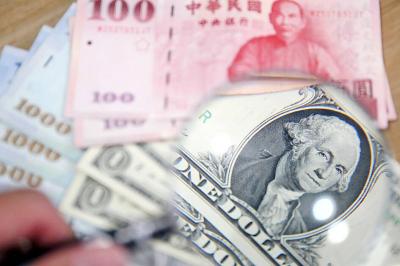When rice farmers started producing yields nine times larger than normal in the Malian desert near the famed town of Timbuktu a decade ago, a passerby could have mistaken the crop for another desert mirage.
Rather, it was the result of an engineering feat that has left experts in the nation in awe — but one that has yet to spread widely through Mali’s farming community.
“We must redouble efforts to get political leaders on board,” said Djiguiba Kouyate, a coordinator in Mali for German development agency GIZ.
With hunger a constant menace, Malians are cautiously turning to a controversial farming technique, known as rice intensification, to adapt to the effects of climate change.
The method, pioneered in Madagascar in 1983, has raised hopes that Mali’s small-scale rice farmers might be able to increase their productivity to meet the country’s gargantuan appetite for the grain.
Consumption of the staple stood at about 72kg of rice per person in 2014, according to the latest data Mali’s National Directorate of Statistics has made public — and demand is continuing to grow.
Dubbed the “system of rice intensification” (SRI), the new rice production method involves planting fewer seeds of traditional rice varieties and taking care of them following a strict regime.
Seedlings are transplanted at a very young age and spaced widely. Soil is enriched with organic matter and must be kept moist, although the system uses less water than traditional rice farming.
SRI is used on both irrigated and non-irrigated land, meaning it is possible to cultivate rice even in Mali’s desert, pilots conducted by the US Agency for International Development have shown.
Up to 20 million farmers use rice intensification in 61 countries, including in Sierra Leone, Senegal and the Ivory Coast, said Norman Uphoff, a senior adviser at the SRI International Network and Resources Center at Cornell University in the US.
Rice plants grown following the method live longer because, given more space, more oxygen and less water, their roots grow bigger and deeper, so they are more resilient to drought and do not deteriorate under flooding, he said.
However, despite its success, the technique has been embraced with varying degrees of enthusiasm from country to country.
That is because it competes with the improved hybrid and inbred rice varieties that agricultural corporations sell, Uphoff said by telephone.
“Corporate agriculture has a huge stake in this,” he said. The new technique is “not good news for the brand breeders and the seed companies.”
Interest in SRI has mounted as droughts and erratic rainfall become more common, adding urgency to efforts to create a steady stream of food from farmland to cooking pots.
Mali is West Africa’s second-largest rice producer, but it still imports 18 percent of its rice annually, said Abdoulaye Koureissi, national coordinator for a rice farmers platform.
Imports prevent local production from reaching its full potential, he said.
And longer droughts and other forms of unpredictable weather are destroying an ever-larger share of crops across the country, where nearly half the adult population suffered from stunting as children due to malnutrition, according to the UN.
Malian authorities are looking for ways to reduce imports and become self-sufficient in rice, Kouyate said.
For Faliry Boly, who heads a rice-growing association, the prospect of rice becoming a “white gold” for Mali should spur on authorities and farmers to adopt rice intensification.
The method could increase yields while also offering a more environmentally friendly alternative, including by replacing chemical fertilizers with organic ones, he said.
What is more, rice intensification naturally lends itself to Mali’s largely arid climate, he said.
Rice intensification uses up to 40 percent less water than traditional rice-growing methods, Kouyate said.
This year, about 100 small-scale farmers were trained in the method through a GIZ-backed effort, Kouyate said, and hundreds more have been trained in other areas of Mali.
Yet, rice intensification has remained largely experimental, with no governmental policy in place to bolster the adoption of the practice, Kouyate added.
Another obstacle is that many farmers using techniques hundreds of years old are often reluctant to try new ways of growing rice, experts said.
Koureissi said he has also seen farmers discouraged by the time investment required to learn the new method, teach it to their farmhands and then practice it.
Rice intensification “asks for a lot of time spent in planting rice, because the seedlings are planted very young, eight to 15 days old, maximum,” he said.
Additional reporting by Sebastien Malo in New York

The US dollar was trading at NT$29.7 at 10am today on the Taipei Foreign Exchange, as the New Taiwan dollar gained NT$1.364 from the previous close last week. The NT dollar continued to rise today, after surging 3.07 percent on Friday. After opening at NT$30.91, the NT dollar gained more than NT$1 in just 15 minutes, briefly passing the NT$30 mark. Before the US Department of the Treasury's semi-annual currency report came out, expectations that the NT dollar would keep rising were already building. The NT dollar on Friday closed at NT$31.064, up by NT$0.953 — a 3.07 percent single-day gain. Today,

‘SHORT TERM’: The local currency would likely remain strong in the near term, driven by anticipated US trade pressure, capital inflows and expectations of a US Fed rate cut The US dollar is expected to fall below NT$30 in the near term, as traders anticipate increased pressure from Washington for Taiwan to allow the New Taiwan dollar to appreciate, Cathay United Bank (國泰世華銀行) chief economist Lin Chi-chao (林啟超) said. Following a sharp drop in the greenback against the NT dollar on Friday, Lin told the Central News Agency that the local currency is likely to remain strong in the short term, driven in part by market psychology surrounding anticipated US policy pressure. On Friday, the US dollar fell NT$0.953, or 3.07 percent, closing at NT$31.064 — its lowest level since Jan.

The New Taiwan dollar and Taiwanese stocks surged on signs that trade tensions between the world’s top two economies might start easing and as US tech earnings boosted the outlook of the nation’s semiconductor exports. The NT dollar strengthened as much as 3.8 percent versus the US dollar to 30.815, the biggest intraday gain since January 2011, closing at NT$31.064. The benchmark TAIEX jumped 2.73 percent to outperform the region’s equity gauges. Outlook for global trade improved after China said it is assessing possible trade talks with the US, providing a boost for the nation’s currency and shares. As the NT dollar

The Financial Supervisory Commission (FSC) yesterday met with some of the nation’s largest insurance companies as a skyrocketing New Taiwan dollar piles pressure on their hundreds of billions of dollars in US bond investments. The commission has asked some life insurance firms, among the biggest Asian holders of US debt, to discuss how the rapidly strengthening NT dollar has impacted their operations, people familiar with the matter said. The meeting took place as the NT dollar jumped as much as 5 percent yesterday, its biggest intraday gain in more than three decades. The local currency surged as exporters rushed to